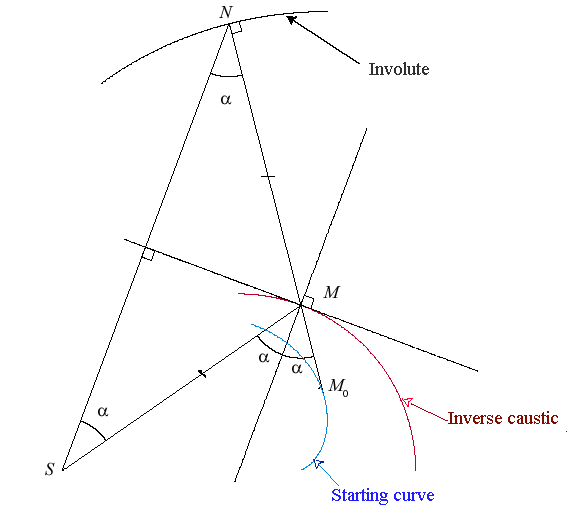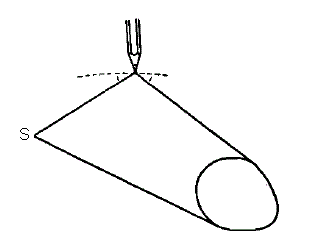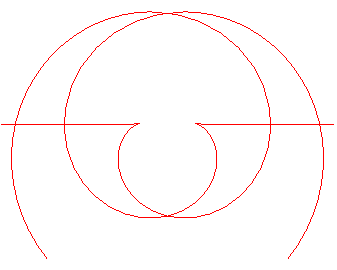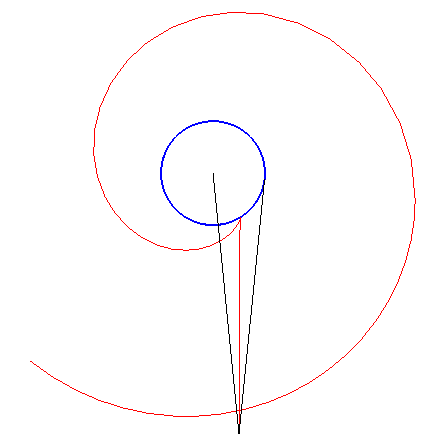If
is the current point on
and M is the one on
,
the condition is that the normal at M to the inverse caustic always
be a bisector of
.
Since the direct caustic is the evolute of the orthotomic, the inverse caustics are the curves for which the orthotomic is one of the involutes of the initial curve.
The diagram opposite shows the construction of M when the point N on the involute is given.

Various lengths of the cord will result in various inverse caustics.


